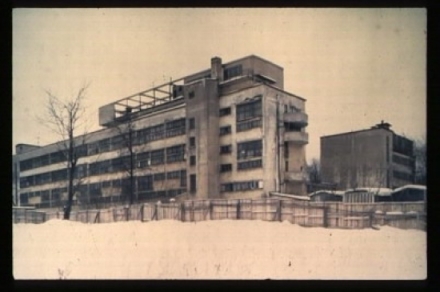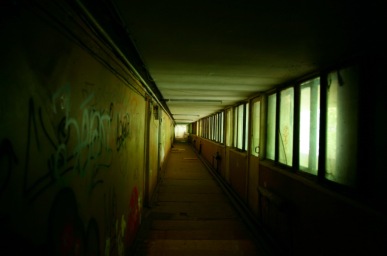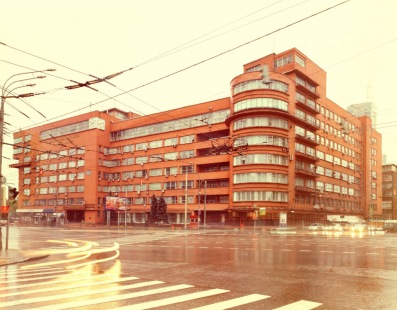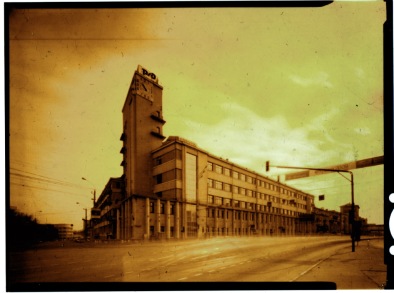Lebbeus Woods
June 8th, 2009
.
Flashed around the world in September 2001, the pictures of the World Trade Center towers lying in ruins were both horrifying and — though few would openly admit it — strangely stimulating. The former because we instantly realized, with despair, that many people had died in the towers’ collapse, and that many others would suffer as a result of it for the rest of their lives. The latter because such a grand scale of destruction evoked an essential truth about human existence, a truth so disturbing that it is usually cloaked in denial: we are all going to die.
Not only will we die, but so will all our works. The great buildings, the great works of art, the great books, the great ideas, on which so many have spent the genius of human invention, will all fall to ruins and disappear in time. And not only will all traces of the human as we know it vanish, but the human itself will, too, as it continues an evolutionary trajectory accelerated by bioengineering and future technological advances. What all of this means is that we cannot take comfort in any form of earthly immortality that might mitigate the suffering caused by the certainty of our personal extinction.
It is true that through works of art, artists can live on in the thoughts and actions of others. This, however, is more of a comfort to the living than to the dead, and while it may help a living artist maintain a denial of death effective enough to keep believing that working and striving is somehow lasting, it is an illusion, and a pretty thin one at that. In contrast, the solidarity that develops between people who accept the inevitability of oblivion is more substantial and sustainable. When we witness an accident or disaster, we are drawn to it not because of ‘prurient interest,’ or an attraction to the pornography of violence, but rather to an event that strips away the illusions of denial and reveals the common denominator of the human condition. For the moment of our witnessing we feel, however uncomfortably, part of a much larger scheme of things, closer to what is true about our existence than we allow ourselves to feel in the normal course of living.
Religions have promised immortality and certainty in afterlives of various kinds, but for many today this is an inadequate antidote to despair. There are people who want to focus on the present and in it to feel a sense of exultation in being alive here and now, not in a postponed “later.” This desire cuts across all class, race, gender, political, and economic lines. In some religious lore, the ruins of human forms will be restored to their original states, protected and enhanced by the omniscient, enduring power of a divine entity. But for those who feel this is too late, the postponement of a full existence is less than ideal. For them, the present — always both decaying and coming into being, certain only in its uncertainty, perfect only in its imperfection — must be a kind of existential ideal. The ruins of something once useful or beautiful or symbolic of human achievement, speaks of the cycles of growth and decay that animate our lives and give them particular meaning relative to time and place. This is the way existence goes, and therefore we must find our exultation in confronting its ambiguity, even its confusion of losses and gains.
The role of art in all this has varied historically and is very much open to question from the viewpoint of the present. The painting and poetry of the Romantic era made extensive use of ruins to symbolize what was called the Sublime, a kind of exalted state of knowing and experience very similar to religious transcendence, lacking only the trappings of the church and overt references to God. Hovering close to religion, Romantic ruins were old, even ancient, venerable. They were cleansed of the sudden violence or slow decay that created them. There was something Edenic about them — Piranesi’s Rome, Shelley’s “Ozymandias,” Wordsworth’s “Tintern Abbey,” Friedrich’s Wreck of the Hope. The best of such works are unsentimental but highly idealized, located intellectually and emotionally between the programmed horror of Medieval charnel houses and the affected nostalgia for a lost innocence of much architecture and painting of the late nineteenth century.
Taken together, these earlier conceptions are a long way from the fresh ruins of the fallen Twin Towers, the wreckage of Sarajevo, the blasted towns of Iraq, which are still bleeding, open wounds in our personal and collective psyches. Continue reading














